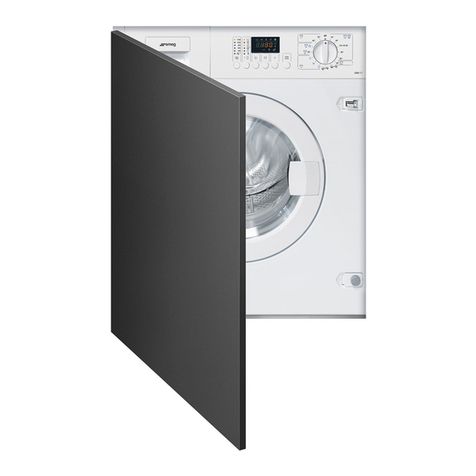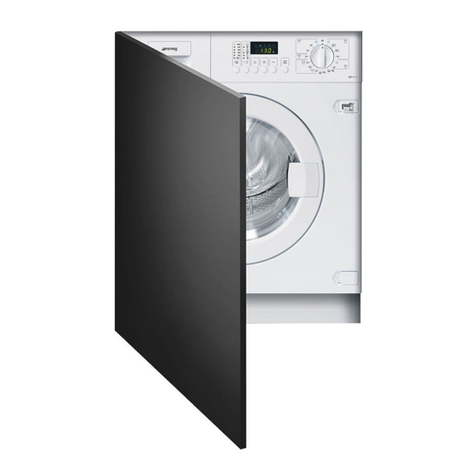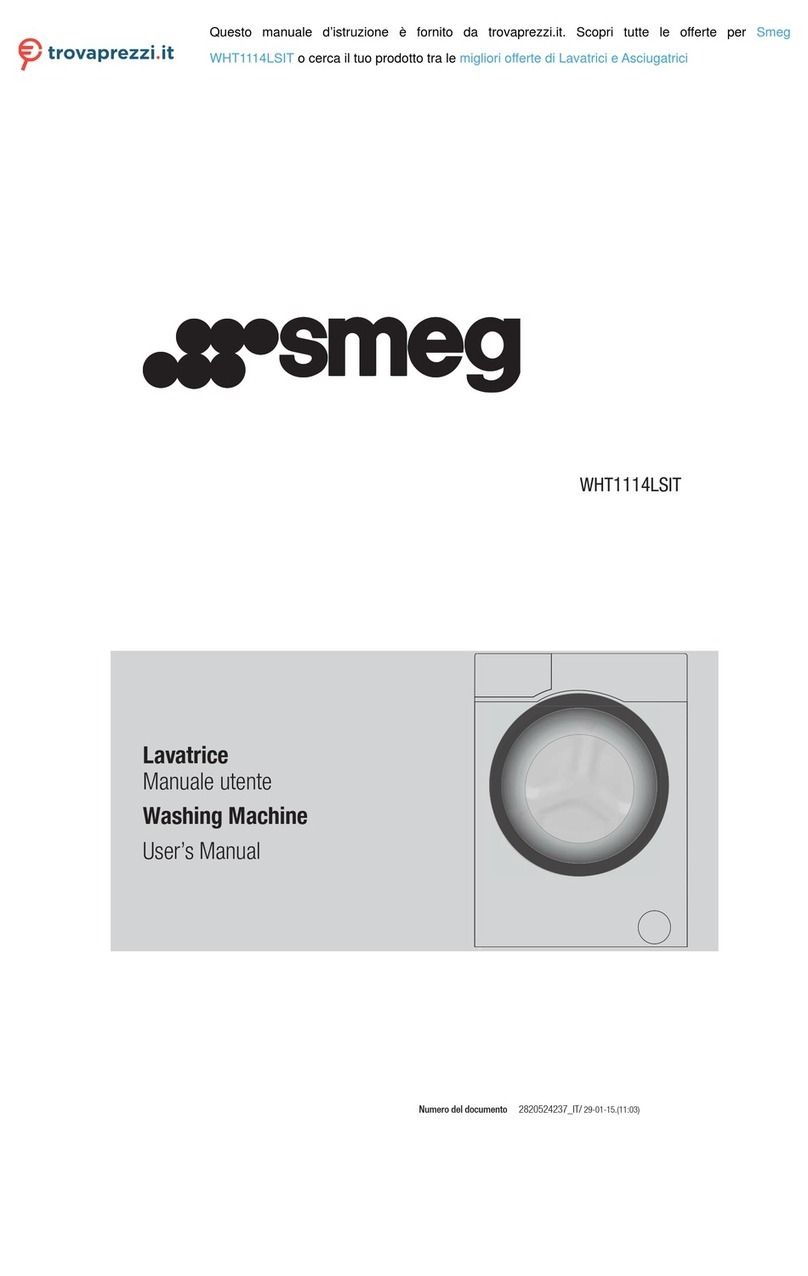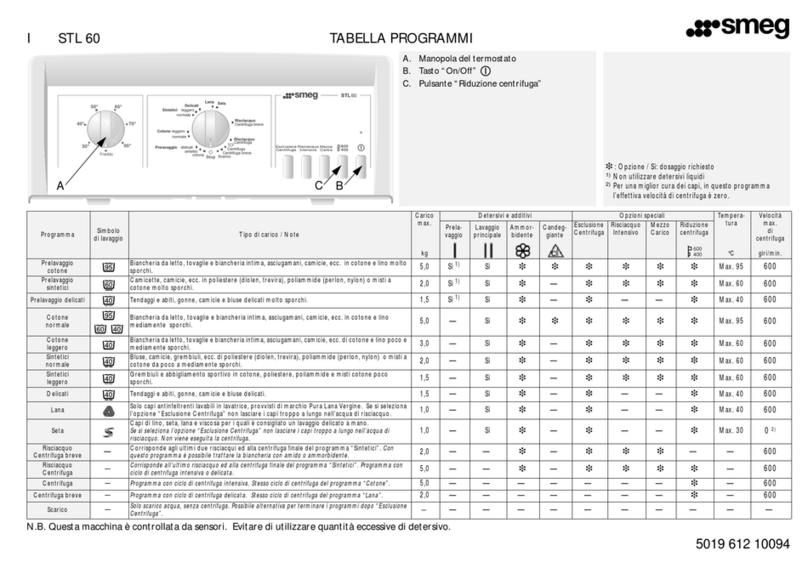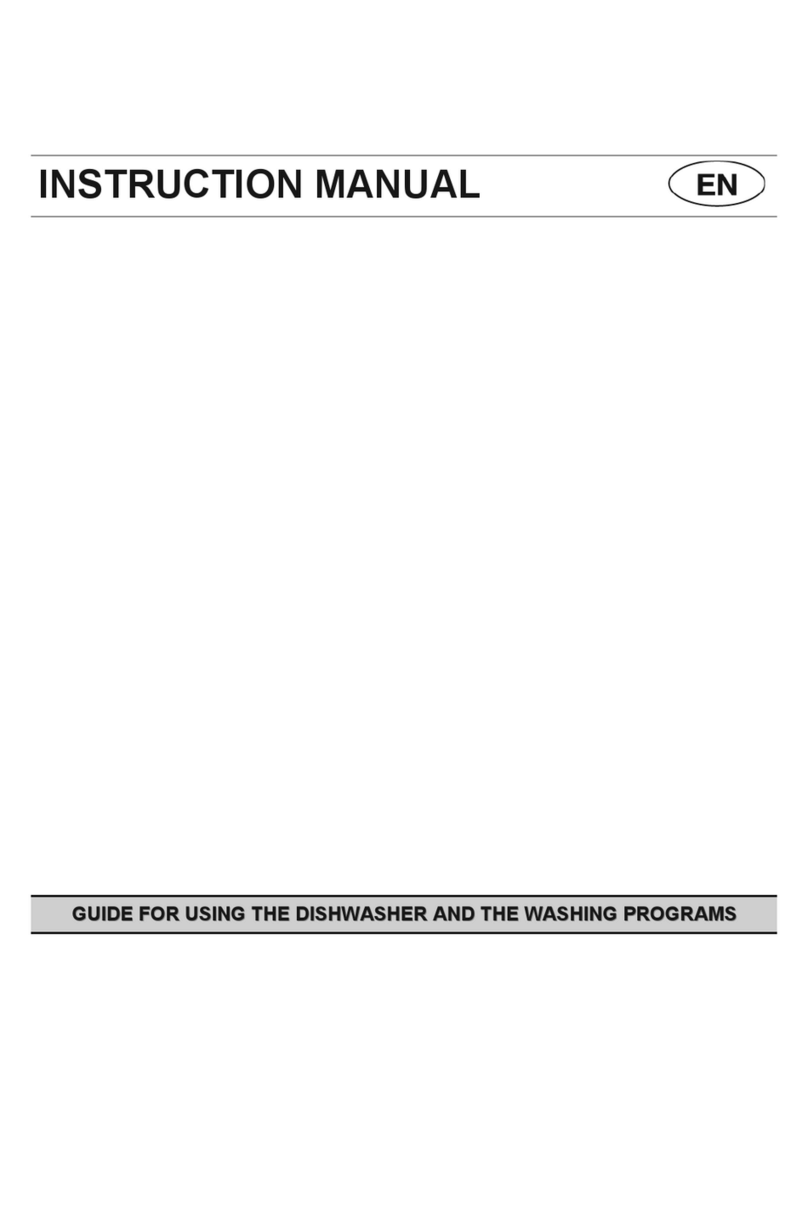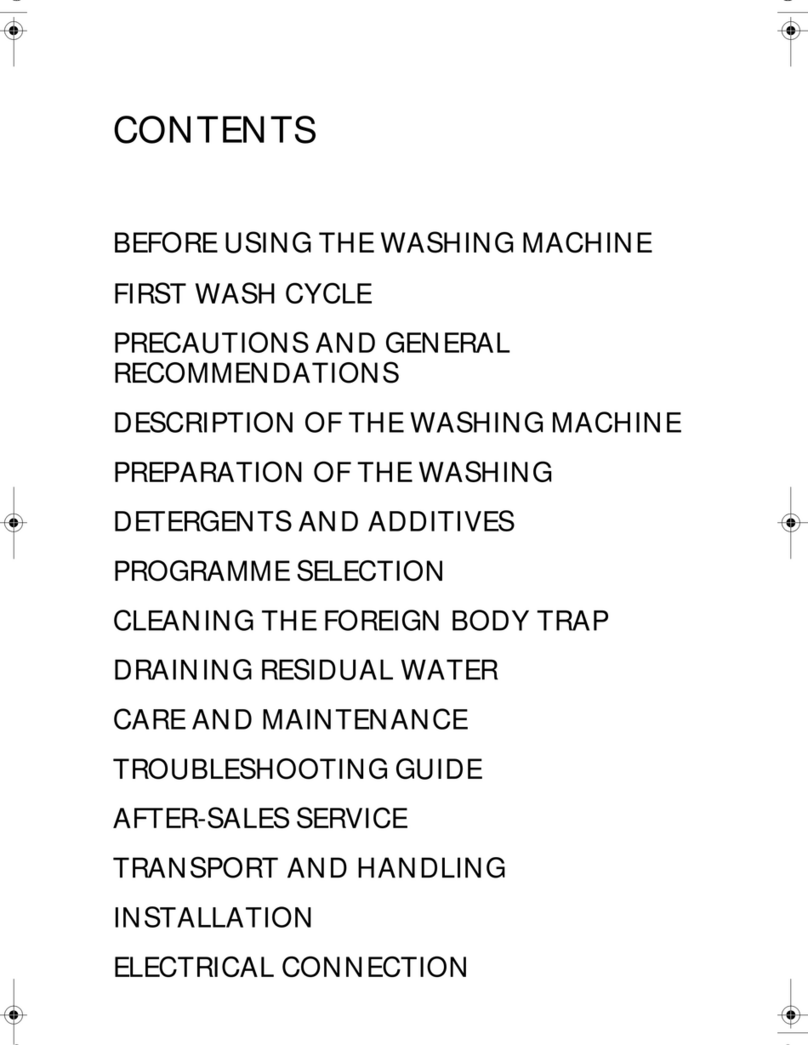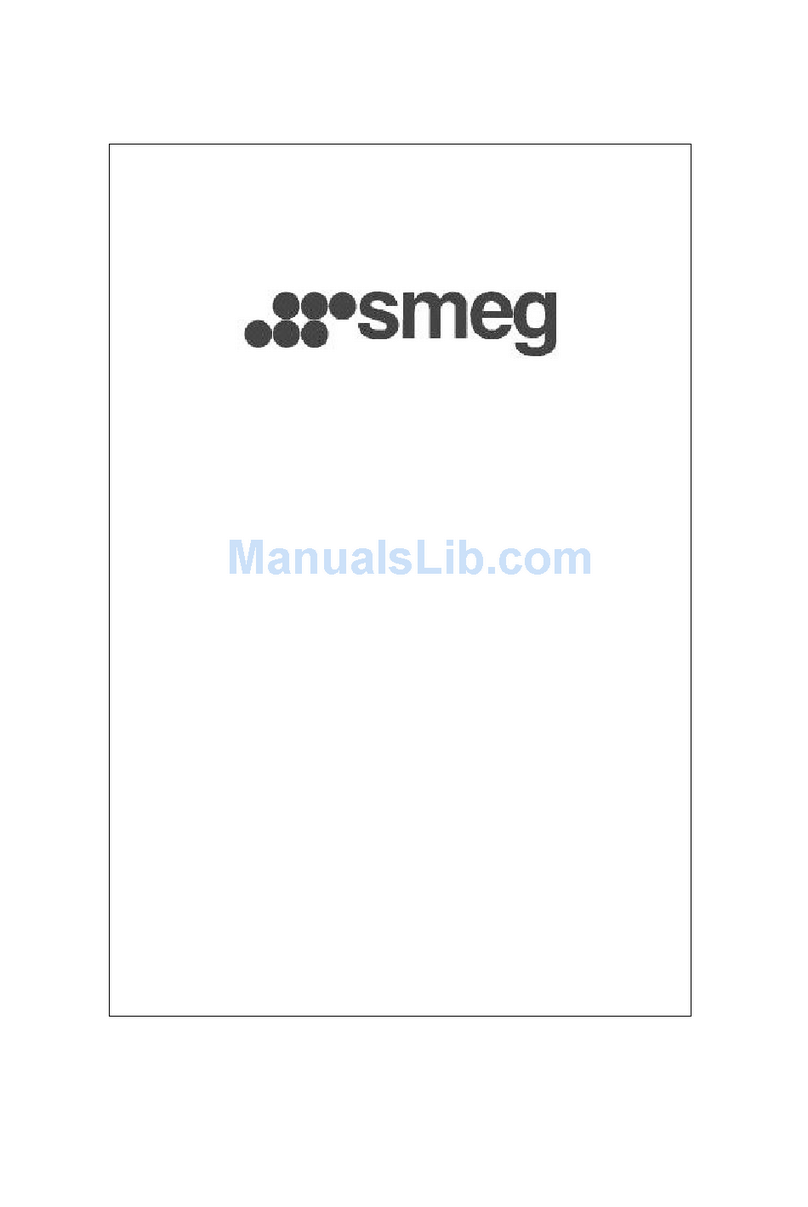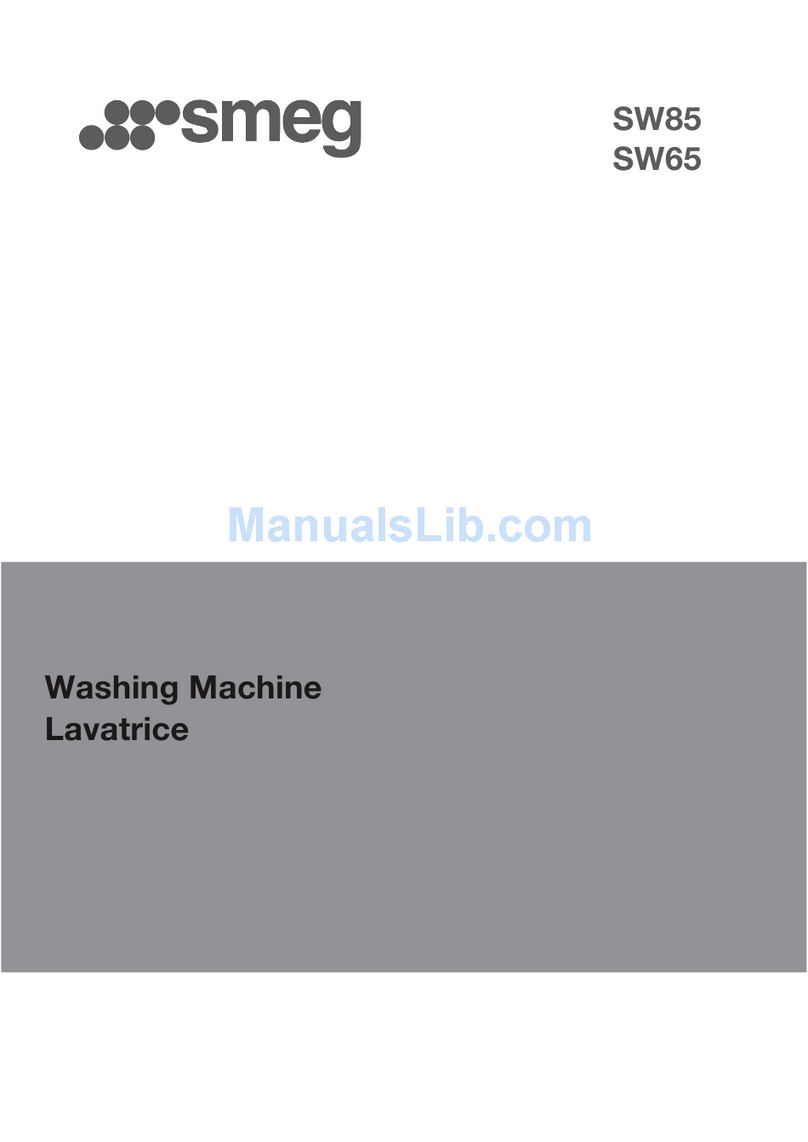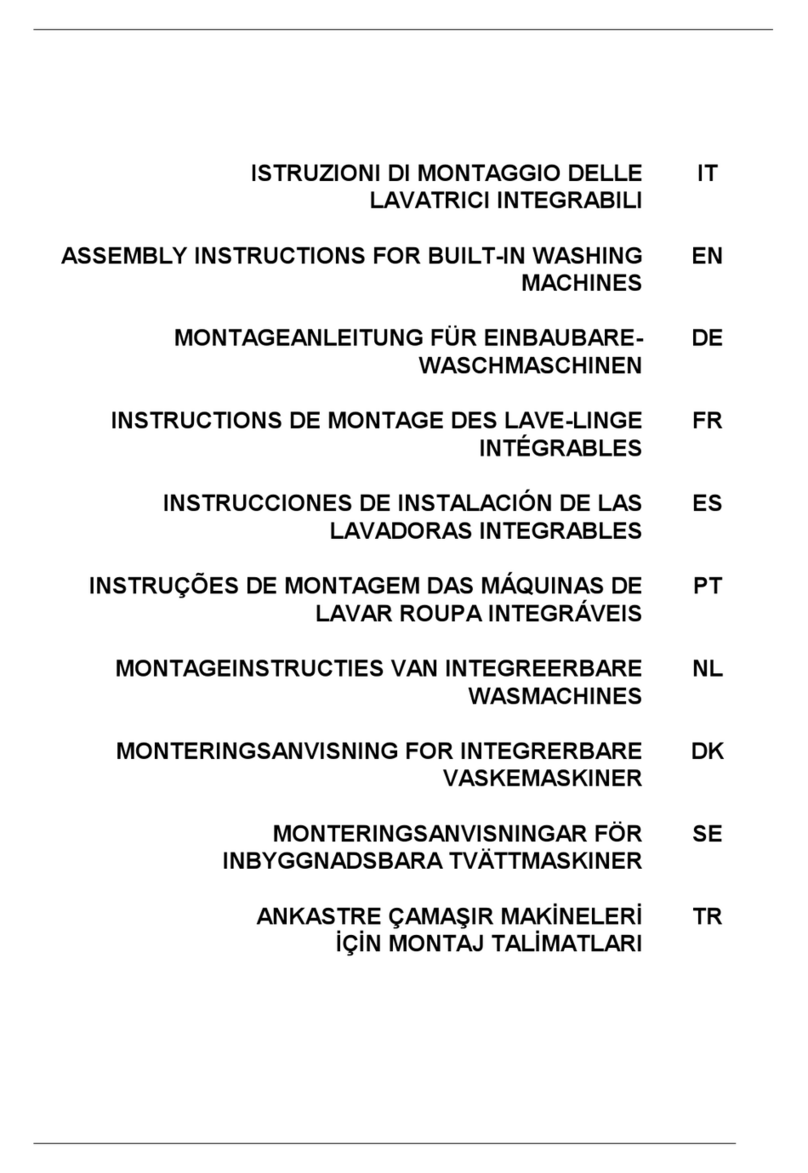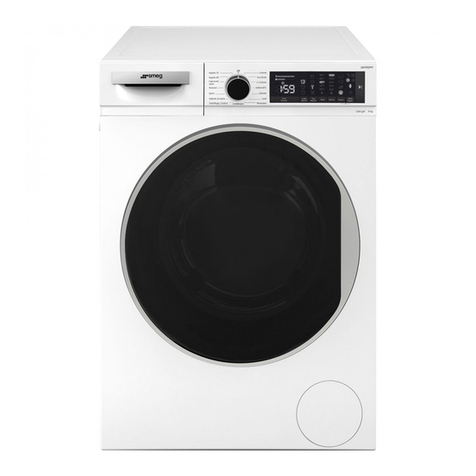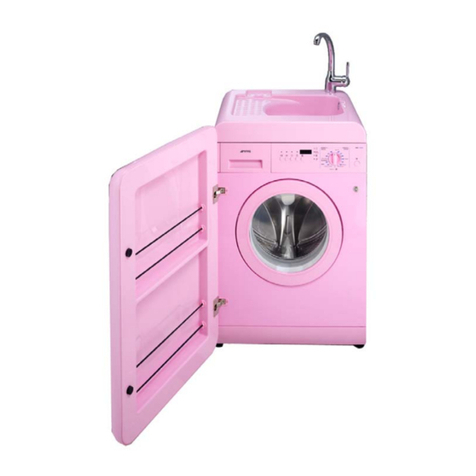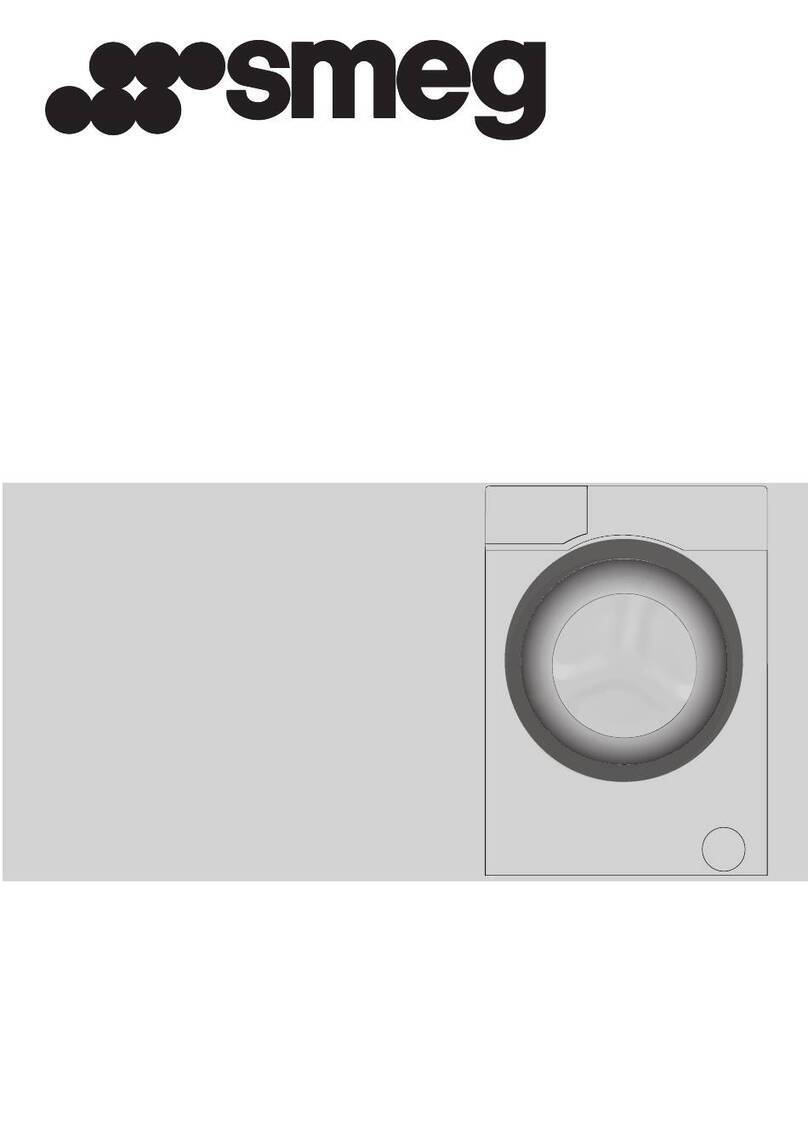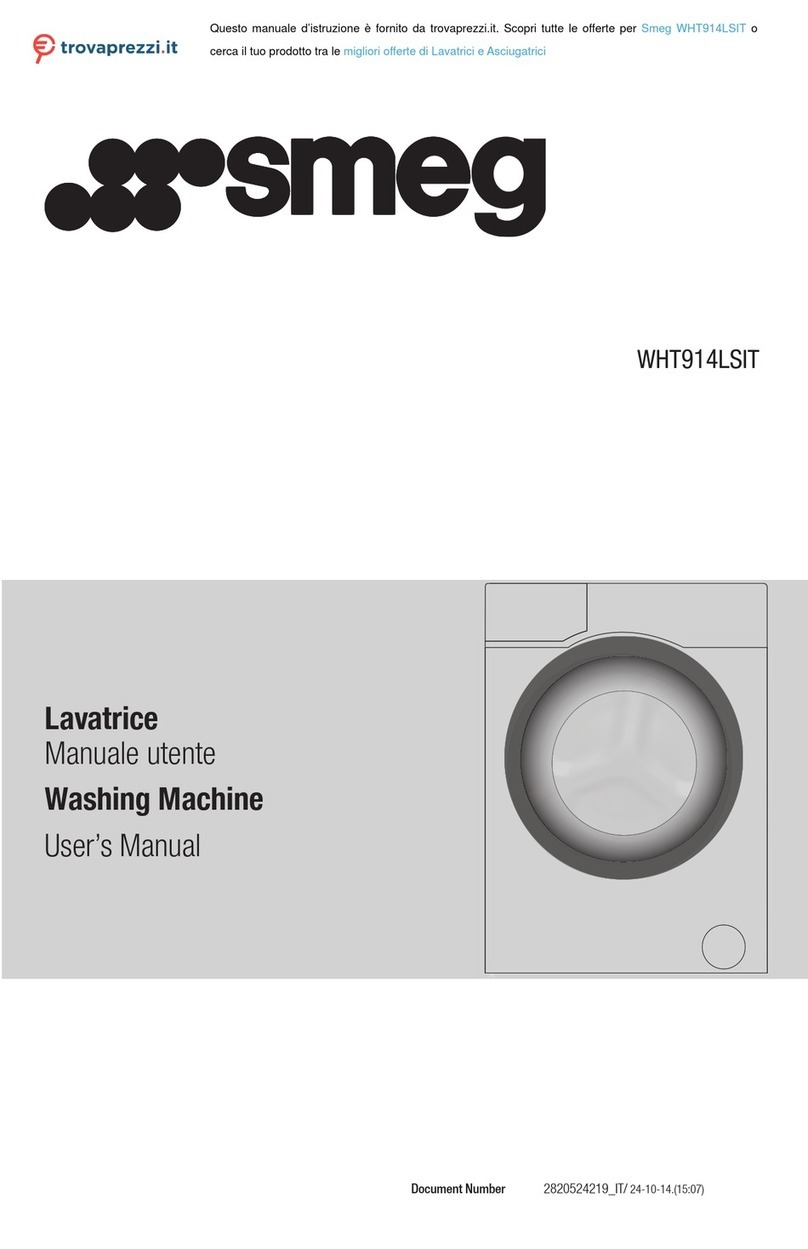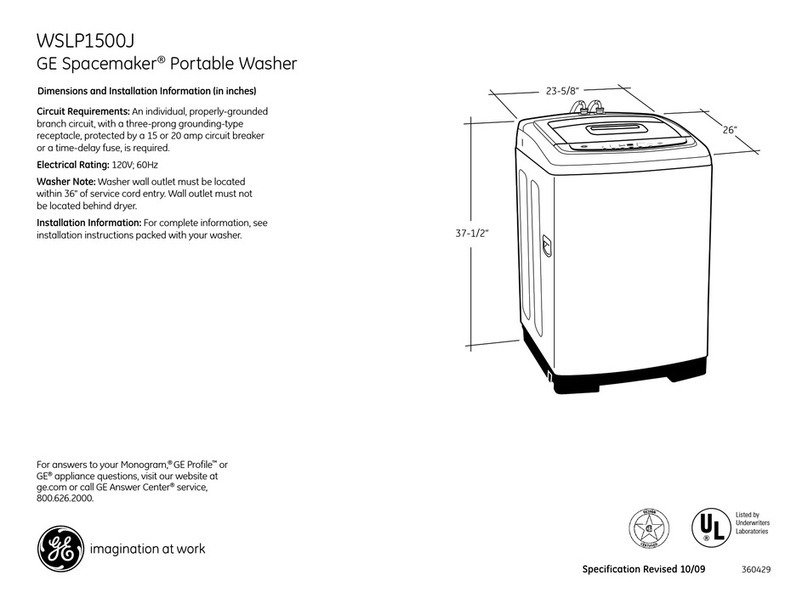25
2. SAFETY WARNINGS
Attention!
These warnings are given for safety reasons.
Please read them carefully before installing and using the appliance.
This manual forms an integral part of the appliance and must therefore be kept intact together with the
machine. Before using the appliance, carefully read all the instructions contained in this manual. Instal-
lation must be performed by a qualified technician in compliance with the regulations in force. It has
been designed for domestic use and complies with EEC Directives 72/23, 89/336 (including 92/31 and
93/68) currently in force. The appliance is designed for the following purpose: washing linen or fabrics
declared by their manufacturers to be suitable for machine washing by means of an appropriate sym-
bol. Any other use shall be considered improper. The manufacturer declines all responsibility for
uses other than those described above.
The name plate featuring the technical data, serial number and markings is visibly positioned on the
inner edge of the door. This name plate must never be removed.
Do not leaving discarded packaging materials unsupervised within the home. Separate the various
packaging materials and take them to the nearest sorted waste collection centre.
The electrical and plumbing work require to install the appliance may only be performed by
qualified technicians.
The appliance must be provided with an earth connection in accordance with the electrical safety regu-
lations in force. The manufacturer declines all responsibility for damage to persons or property
resulting from failure to earth the appliance or from a defective earth connection.
If the appliance is not connected to the electrical power supply by means of a plug, it is necessary to
install an isolation switch with a contact opening gap of at least 3 mm.
The plug on the power cord and the corresponding socket must be of the same type and must conform
to the regulations in force. Check that the voltage and frequency of the electrical power supply match
the ratings on the name plate. Avoid using adaptors or shunt connections. Never unplug the appliance
by pulling the power cord.
The machine is only disconnected from the electrical power supply if the plug has been re-
moved from the socket or if the general switch has been turned off. After installation, the plug
must remain accessible.
The appliance must always be connected to the water supply with new hoses (supplied with the appli-
ance). Old hoses must never be reused.
Make sure the appliance does not lie on the power cord.
Before use, make sure the tub assembly has been released (see instructions).
If the tub assembly has not been released, it may damage the appliance or adjacent furniture or appli-
ances during the spin cycle.
The washing machine must never be used in vehicles, on ships or planes, or in special environmental
conditions such as explosive or corrosive (powder, vapour and gas) atmospheres or near explosive
and/or corrosive liquids.
Do not install the washing machine in areas subject to frosting. Frozen pipes may burst under pres-
sure.
Make sure that the drain hose is securely attached to the basin and cannot move.
If it is not securely fitted, the repulsive force of the water may detach it from the basin and cause flood-
ing.
When attaching the hose to the basin, make sure the water drains away rapidly and does not fill
the basin up.
Do not overload the appliance.
Never use detergents containing solvents or chemicals.
These may damage the machine and form poisonous fumes.
They may also catch fire and explode.

